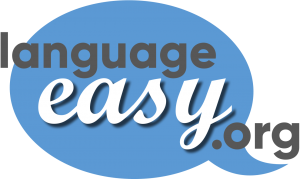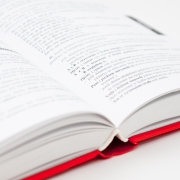Have you ever tried to read French and had this sensation that it is more complicated that it should be ? The French alphabet is the same as the one you use to write in English, you familiarized yourself with the differences in the pronunciation, you can even sing the French Alphabet song by heart… This shouldn’t be harder than this, right ?
Still, your French mother-in-law still doesn’t get it. I guess you would feel frustration, and it’s perfectly legitimate. Sometimes, what’s written and spoken, it’s just not the same. As a native French speaker, I was taught how to do it from a young age, and hundreds of thousands of words read later it looked perfectly simple and straightforward me, so much that I had lost contact with that feeling of not understanding why, oh why, do we complicate ourselves so much ?
Until I had this conversation with my Romanian girlfriend who explained me that in Romanian, they simply wrote everything as it was pronounced, and that there were hardly any exception (except maybe with some words originating from… French). Well, I did the experiment and tried to read some pages in Romanian (which was absolute Chinese to me) after she explained to me how to pronounce the â (yes, it’s not even in the French alphabet, and the corresponding sound is weird). Even if I didn’t know what i was reading it resulted quite simple to me and perfectly understandable to her.
With any other language I came across, I realized it was more or less the same. Some of them (like Hindi) are literally written phonetically. I started to wonder how non-French speakers should learn to pronounce written French, and what a big mistake it would be to learn the French alphabet and read it as it is. Just don’t.
And that’s how I decided to make that small guide :
How to read and pronounce French if you don’t speak it yet !
I intentionally simplified things a bit, because my goal is to give a medicine for the headache and to show the basics on how to read unknown words in French without feeling insecure. My approach is to allow approximations and make the exceptions part of another existing rule instead of having to learn many different cases. And, forget the French alphabet as a reference, but take the sounds to be read as a reference instead.
Familiarize yourself with the new sounds
In order to be able to read French correctly, you will have to familiarize yourself with these new sounds, hear them, feel them, and be able to reproduce them. These new sounds are :
- The closed “u” /y/ like in “le but” (the goal)
- The guttural “r” /R/ like in “la mer” (the sea)
- The nasal sounds “on” /ɔ̃/, “an” /ɑ̃/, “in” /ɛ̃/ and “un” /œ̃/ like in “un ancien mont” (an ancient mount)
- The “gn” /ɲ/ like in “la montagne” similar to the Spanish ñ
Use the International Phonetic Alphabet as a reference, listen to a native speaker, try to reproduce and ask someone to correct you.
Take the good attitude
In French, some sounds are represented by a group of 2, 3 or even 4 letters. This happens quite a lot, more than in English, and unlike with the intonation or accentuation, you can’t miss those ones if you want to be correctly understood. If you don’t recognize them, instead of one sound, you might pronounce two different other sounds and get it all wrong. In the case of the vowels, for example : “ai” should be read /ɛ/ and not /ai/… This is the main reason why you shouldn’t rely on knowing the French alphabet and its pronunciation.
When you don’t know word, instead of reading the words letter by letter, you should recognize the sounds and their possible representations.
Knowing how to decipher new words sound by sound is a necessary thing, and the object of this guide, but later, when your vocabulary expands, you will have the option to recognize similar words and patterns, and reading will feel more easy and flowing.
The good attitude is to recognize the words and patterns you already know and remember how they are pronounced.
Don’t be hard on yourself : French speakers aren’t
French uses a monotone tone of voice : accentuation in words are not that important, and there is no real difference between short and long vowels. As an English speaker, you’ll probably be smiled at for your accent (in a nice and respectful way though) ; so if you make a “a” too long or too short, it’s OK. The use of the French alphabet doesn’t include long or short vowels, so you’ll be understood anyways.
There are also disparities in pronunciation even between native speakers from different regions of France, and some subtleties in pronunciation (like the use of /ɑ/ or the choice between /ɔ/ and /o/, /œ/ and /ø/) would only introduce a lot of rules, exceptions and cases that would complicate things for you now, while at the same time we French people are not always respecting them so much, depending on where we’re born.
Relax. In this guide we’ll concentrate on not making mistakes when reading. You’ll tune your accent later.
Another example , in the region of Paris, people don’t make a difference between “on” and “an”, or between “un” and “in”. They use sounds in between ; and being myself a southerner, my ear doesn’t understand poetry from a Parisian singer who makes “demande” rime with “monde”.
The vowels of the French Alphabet… And the other ones
The vowels in the french alphabet are the same as in the English alphabet. There is a big difference though : all vowel letters can also be altered by one of the four possible accents : the acute accent (“é“), the grave accent (“è“), the circumflex (“ê“) and the diaeresis (“ë“). That makes 24 possible alterations for the vowels, but we can simplify a lot, since most of the alterations only serve for silent reasons of etymology, to differentiate in writing words that are pronounced the same, or to change in the pronunciation in a minimal way that brings more confusion than anything for the beginner (while introducing subtleties that even French speakers mistreat sometimes).
So just consider things like :
Ignore any alteration except “é“, “è” and “ê“
And about the diaeresis :
The diaeresis breaks the grouping of the letter in the representation of a sound : “aï” is now pronounced /ai/, “oi” /oi/, etc…
So, now that we have introduced all the necessary information, here is the list you’ll want to refer to, or learn :
| a |
/a/ or /ɑ/ |
un chat (a cat) |
| e, eu, œ = oe, œu = oeu |
/ø/ or /œ/ |
le bleu (blue), un œuf (an egg) |
| é |
/e/ |
mangé (eaten) |
| è, ê, ai, ei, ay, ey |
/ɛ/ |
un élève (a pupil), le maire (the mayor), la reine (the queen) |
| e followed by a double consonant |
/ɛ/ |
un verre (a glass), une pelle (a shovel), une dette (a debt) |
i
y not followed by a vowel |
/i/ |
bicyclette (bicicle) |
| o, au, eau |
/o/ or /ɔ/ |
au bord de l’eau (at the edge of the water) |
| u |
/y/ |
pur (pure) |
| ou |
/u/ |
pour (for) |
| oi, oy |
/wa/ |
la loi (the ley) |
Also remember the representation of the nasal vowels, a vowel followed by an m or an n, but only if not followed by another vowel :
| on, om |
/ɔ̃/ |
un son (a sound), but : bonne (good, f.), bonus (bonus) |
| in, im, ain, aim, ein, eim |
/ɛ̃/ |
le vin (wine), but : devine (guess) |
| un, um |
/œ̃/ |
un article (an article), but : une exception (an exception) |
| an, am, en, em |
/ɑ̃/ |
le nouvel an (new year), but : la banane (the banana) |
The special /j/ sound and the “y”: a semi vowel in the French alphabet
The “y” is considered a semi-vowel in the French alphabet, because when placed before another vowel, it becomes a consonant and represents the sound /j/ (like in the English “yes”). As you saw before, this doesn’t happen when it is placed after a vowel : in this case we would another form of writing it : “ill”
| y followed by a vowel |
/j/ |
Un coyote (a coyote) |
| ill |
/ij/ |
une fille (a girl) |
| eil, eill |
/ɛj/ |
un orteil (a toe) |
| ail, aill |
/aj/ |
la paille (the straw) |
| oeuil, euil, euill |
/ɔj/ |
le feuillage (the leaves) |
| ouil, ouill |
/uj/ |
rouillé (rusted) |
Mute letters and liaison
In French, there are a lot of cases where we write letters that shouldn’t be pronounced at all. They usually are the marks of specific grammatical constructions (like feminine and plural) or conjugations when the pronunciation is similar ; or they come for etymology reasons, as French words can originate from a variety of distinct old languages such as Greek, Latin, Italian, German, English, or even local ones like Breton. And sometimes, they also change the pronunciation of the letter they follow.
Here are the patterns at the end of a word :
–s, –x, –p, –t, –d, -g
–ts, –ds, –gs
|
Usually not pronnounced |
les époux (the brides), trop (too much), les dents (the teeth)
|
| –e, -es |
Not pronounced, or only softly |
un article (an article), des poules (chickens) |
| –ent |
in the case of verb conjugation at he 3d plural, not pronounced, or softly as /ø/ |
ils parlent (they are talking) |
| –er, –ez |
/e/ |
vous parlez (you talk), un fermier (a farmer) |
| –et, –ets |
/ɛ/ |
un robinet (a tap) |
| –el |
/ɛl/ |
un courriel (un email) |
And at the beginning :
| h– |
Not pronounced |
un haricot (a bean) |
Then, we have the liaison rule :
When the following word starts by a vowel (including, not “h“) pronounce the last letter to make the transition sound better.
If this last letter is an “s“, pronounce it “z“, If it is a “d“, pronounce it “t“.
For example : “les enfants” (the children) /lezɑ̃fɑ̃/, “trop aigu” (too acute) /tRo pegu/, “les haricots” (the beans) /le aRiko/
This is not an absolute rule, you might have to consider the usage. Pronouncing “les enfants” without the liaison would sound as weird as making the liaison in “un long été” (a long summer) or in “un blanc ardent”. Also, “des nuages obscurs” (dark clouds) can be pronounced equally with or without the liaison (poets use this possibility to add or remove a syllable from a verse to adjust its length to fit the constraint of the poem, a process known as synaeresis and diaeresis).
And now, let’s learn the consonants
The consonants of the French Alphabet are pronounced mostly the same than in English. Here are the ones that differ :
| ch |
/ʃ/ |
Le chat (the cat) |
| gn |
/ɲ/ |
La montagne (the mountain) |
| f, ph |
/f/ |
Un téléphone (a telephone), le fil (the weave) |
| t, th |
/t/ |
|
g followed by a, o, u, or a consonant
gu followed by e, i, y |
/g/ |
aïgu (acute), un ogre (an oger)
un guide (a guide) |
j
g followed by e, i, y
ge followed by a, o, u |
/ʒ/ |
joli (nice)
un orage (an orage)
rougeâtre (reddish), la geôle (the prison) |
k
c followed by a, o, u, or a consonant
qu
q |
/k/ |
court (short), un crime (a crime)
la traque (the hunt)
le coq (the rooster) |
z
s between two vowels |
/z/ |
Un zèbre (a zebra)
une usine (a factory) |
s in the other cases
c followed by e, i, y
ç followed by a, o, u |
/s/ |
Le sel (the salt)
les sourcils (the eyebrows)
la leçon (the lesson) |
Et voilà !
And now to put in practice all that you’ve learnt today. I suggest that you invite your mother-in-law for a tea and read her a special sentence that we have :
Portez ce vieux whisky au juge blond qui fume.
Did you get what’s special about that sentence ? Yes, it contains all the letters from the French Alphabet !
What if I’m single ? =)
If you don’t have a French mother-in-law to whom proudly demonstrate your new skills, don’t worry, we can provide one for you !
Well, maybe not exactly… But at least we have native teachers here who will be happy to hear you, congratulate you, give you some advice, and go deeper into the grammatical or etymological aspects if you are interested…
Try it now





